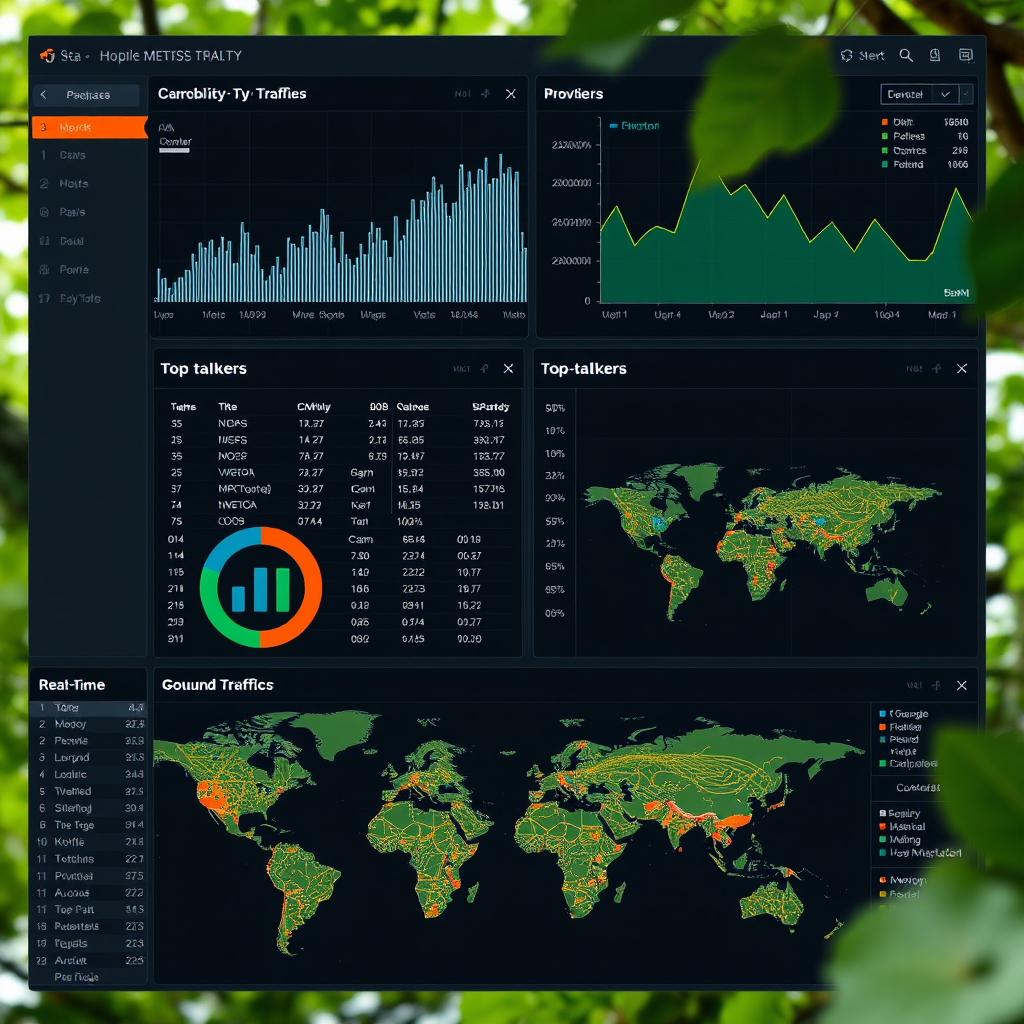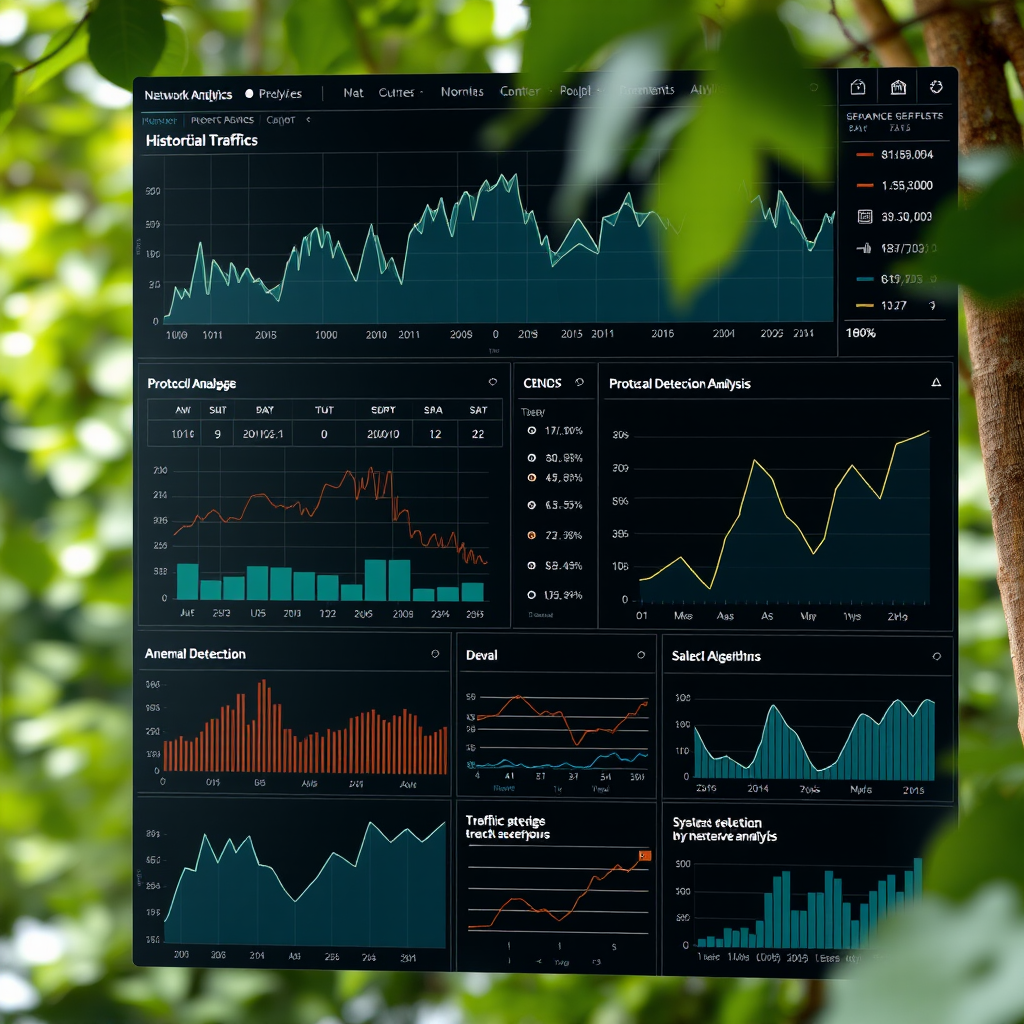In today's interconnected digital landscape, network security monitoring has become a critical component of any robust cybersecurity strategy. As cyber threats continue to evolve and become more sophisticated, organizations must implement comprehensive monitoring solutions to protect their infrastructure and sensitive data.
Understanding Network Security Monitoring
Network security monitoring involves the continuous observation and analysis of network traffic, system logs, and security events to identify potential threats, anomalies, and security breaches. This proactive approach enables organizations to detect and respond to incidents before they can cause significant damage.
Effective network monitoring goes beyond simple uptime checks. It encompasses deep packet inspection, behavioral analysis, and correlation of events across multiple network utils and sysadmin tools to provide comprehensive visibility into your network's security posture.

Essential Network Security Monitoring Tools
Intrusion Detection Systems (IDS)
Intrusion Detection Systems form the backbone of network security monitoring. These systems analyze network traffic patterns and compare them against known attack signatures and behavioral baselines. Modern IDS solutions can detect various types of attacks, including:
- Network-based attacks such as port scans and denial-of-service attempts
- Application-layer attacks targeting web services and databases
- Insider threats and unusual user behavior patterns
- Malware communication and command-and-control traffic
Network Traffic Analysis Tools
Traffic analysis tools provide deep visibility into network communications, allowing security teams to understand normal network behavior and quickly identify anomalies. These network utils enable administrators to:
- Monitor bandwidth utilization and identify unusual traffic spikes
- Analyze protocol distributions and detect protocol anomalies
- Track data flows between network segments and external destinations
- Identify unauthorized applications and services running on the network

Security Information and Event Management (SIEM)
SIEM platforms aggregate and correlate security events from multiple sources across your network infrastructure. These comprehensive sysadmin tools provide centralized logging, real-time analysis, and automated alerting capabilities that are essential for maintaining security awareness.
Establishing Network Behavior Baselines
One of the most critical aspects of effective network security monitoring is establishing accurate baselines of normal network behavior. Without understanding what constitutes normal activity, it becomes nearly impossible to identify genuine security threats among the noise of everyday network operations.
Key Baseline Metrics
When establishing network baselines, focus on collecting and analyzing the following key metrics:
- Traffic Volume Patterns: Monitor typical bandwidth usage during different times of day, days of the week, and seasonal variations
- Protocol Distribution: Document the normal mix of protocols used on your network and their typical usage patterns
- Connection Patterns: Track typical connection durations, frequency, and the most common source-destination pairs
- User Behavior: Establish patterns for user login times, resource access, and typical data transfer volumes

Best Practices for Network Security Monitoring
Implement Layered Monitoring
Deploy monitoring solutions at multiple network layers to ensure comprehensive coverage. This includes perimeter monitoring at firewalls and gateways, internal network monitoring at switches and routers, and endpoint monitoring on critical servers and workstations.
Automate Alert Management
Configure intelligent alerting systems that can differentiate between genuine security threats and false positives. Use machine learning algorithms and behavioral analysis to reduce alert fatigue while ensuring that critical incidents receive immediate attention.
Regular Tool Calibration
Regularly review and update your monitoring tools' configurations, signatures, and detection rules. As your network evolves and new threats emerge, your monitoring systems must adapt to maintain their effectiveness.
Incident Response Integration
Ensure that your network security monitoring tools are properly integrated with your incident response procedures. Automated workflows should trigger appropriate response actions when specific threat conditions are detected.

Advanced Monitoring Techniques
Behavioral Analytics
Modern network security monitoring increasingly relies on behavioral analytics to detect sophisticated threats that traditional signature-based systems might miss. These advanced techniques use machine learning algorithms to identify subtle deviations from normal network behavior patterns.
Threat Intelligence Integration
Incorporate external threat intelligence feeds into your monitoring systems to enhance detection capabilities. This allows your network utils to identify known malicious IP addresses, domains, and attack patterns before they can impact your infrastructure.
Measuring Monitoring Effectiveness
To ensure your network security monitoring program remains effective, establish key performance indicators (KPIs) and regularly assess your monitoring capabilities. Important metrics include mean time to detection (MTTD), mean time to response (MTTR), false positive rates, and coverage percentage across your network infrastructure.
Regular security assessments and penetration testing can help validate the effectiveness of your monitoring systems and identify potential blind spots that require additional coverage.
Future of Network Security Monitoring
As networks become more complex and threats more sophisticated, network security monitoring continues to evolve. Emerging technologies such as artificial intelligence, cloud-native monitoring solutions, and zero-trust architectures are reshaping how organizations approach network security.
The integration of these advanced technologies with traditional sysadmin tools creates more powerful and intelligent monitoring capabilities that can adapt to changing threat landscapes and provide better protection for critical network infrastructure.
Key Takeaway
Effective network security monitoring requires a combination of the right tools, proper configuration, continuous baseline maintenance, and skilled personnel. By implementing comprehensive monitoring strategies and following best practices, organizations can significantly improve their ability to detect, respond to, and prevent security incidents.
